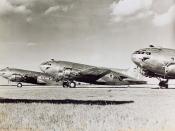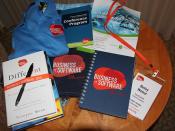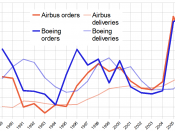The Boeing CompanyAbstractThe author discusses the business strategy of Boeing using Porter's value chain model and competitive forces model. She goes on to discuss the relationship of knowledge management to the Boeing Company and the Airbus Company.
Question 1Analyze Boeing and its business strategy using the value chain and competitive forces model.
Porter's Value Chain and Competitive Forces Model helps managers to make decisions based on the external environment through an internal analysis. Value chain analysis describes the activities within and around an organization, and relates them to an analysis of the competitive strengths of the organization. Therefore, it evaluates the value each particular activity adds to the organizations products or services. The Value Chain Model and Competitive Forces Model is especially useful in helping managers to develop and implement long term strategies for business, in order to maintain or build a competitive advantage.
Entry of CompetitorsNew entrants in this market need to be mindful of the money it takes to maintain such a venture, the set of laws that govern the field, and the skilled workers needed.
The technical know how is important as well and the capabilities involved along with a proven history in the field are definitely key barriers for new entrants.
Boeing assumes full market risk every time they develop a new airplane. Airbus does not. Boeing has to pay back every dime it borrows on time and with interest whether an airplane program is successful or not. Even though Airbus is supposed to repay its launch aid, it has to do so only if the subsidized program is successful.
Over the years, Airbus has received some $15 billion in launch aid, which has been influential in omitting some of the barriers that existed as a new entrant. It has not repaid most of that...


